Old Murayama-bashi Bridge
It is late in updating this blog, but this is the story of a place I visited on the same day as the previous article.
About 2.5 km south of the Naganuma branch office and gymnasium is the Murayama-bashi Bridge, which crosses the Chikuma River.
After crossing this bridge, one enters Suzaka City.
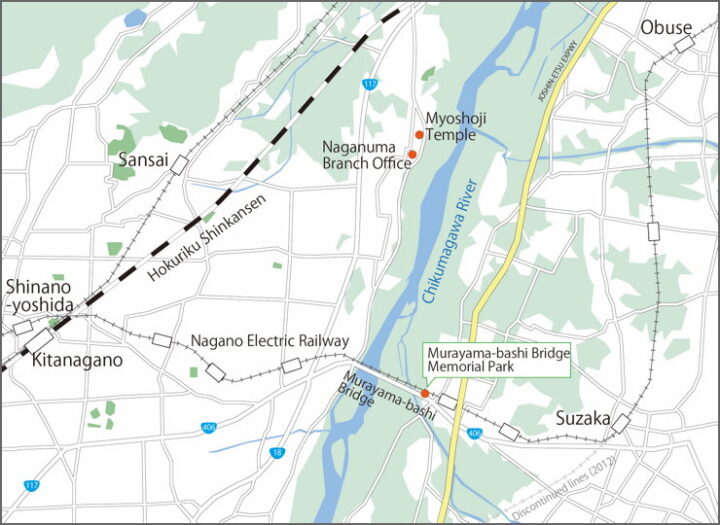
The current Murayama-bashi Bridge was built in 2004 (two up lanes) and 2008 (two down lanes).
Before that, the (old) Murayama-bashi Bridge, completed in 1926, was in use.
I heard that there is a “Murayama-bashi Bridge Memorial Park" on the east side of the bridge that commemorates the old bridge, so I went to see it.
A view of the Memorial Park. Heading from Nagano to Suzaka, it is on the left after crossing the bridge.
I saw the steel frame and the newels of the bridge in place.
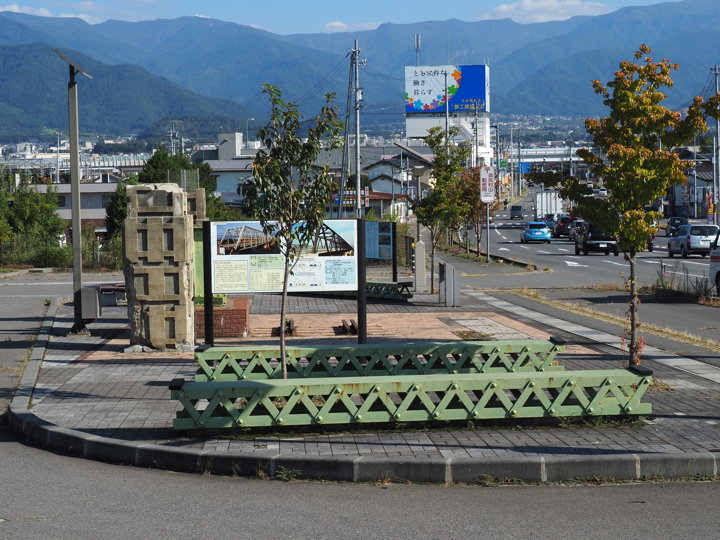
An explanatory board in the Memorial Park reads as follows.
“The old Murayama-bashi Bridge was completed in 1926, and at that time it was a very rare bridge in Japan, being a combination of a railroad bridge for Nagano Electric Railway and a road bridge for National Road No. 406. After 83 years in service, the bridge was replaced by the new Murayama-bashi Bridge due to its age, but it has long been an important facility connecting Nagano City and Suzaka City, and is well known to local residents. Since the bridge is also highly valuable as a modern civil engineering heritage, it was developed as a road rest facility using components of the old Murayama-bashi Bridge.
December 2011″
I approached the monument. It has two newels on the left and right, and in the center, a part of the truss bridge cut out was placed.
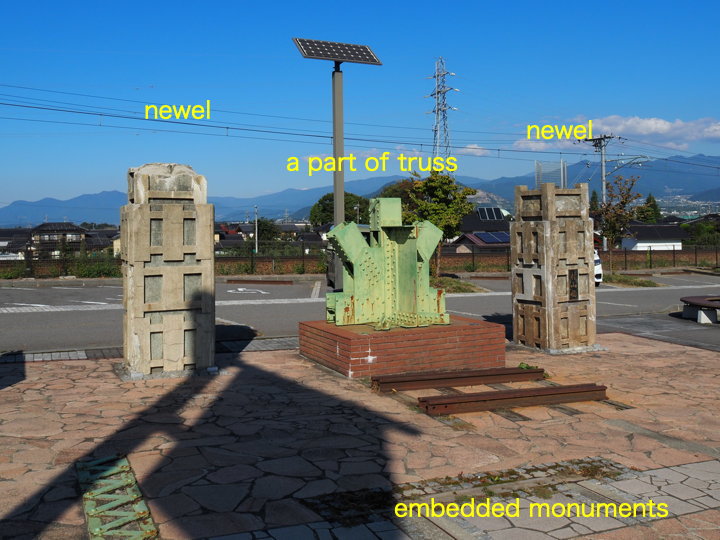
The newel is said to be designed with a motif of a spool of thread from the silk industry. At that time, the silk industry was at its peak in Suzaka City.
The embedded monument was explained to be a reconstruction of a sectional view of a road bridge and a railroad bridge, although it is difficult to tell from the photo.
In 1888, the Shinetsu Main Line between Karuizawa and Naoetsu opened and Nagano and Toyono Stations were established. Toyono Station was the counter for transporting cocoons and raw silk from Suzaka (outside the frame in the map above).
In 1898, Yoshida Station (present-day Kita-Nagano Station) was established, and from then on, goods were transported via Yoshida Station.
Requests were made to improve transportation between Yoshida Station and Suzaka Town, including a request for the prefectural government to operate the then existing bridge (a bridge built over a row of boats) and a petition for the establishment of a horse-drawn railroad.
In 1918, a cableway was built between Suzaka and Yoshida to transport sulfur from the Yonago Mine to Yoshida Station and coal from Yoshida Station to Suzaka.
As for railroads, the Kato Railway Company was established in 1920, and the line between Suzaka and Yashiro opened in 1922. The following year, the line was extended to Shinshu-Nakano.
On the other hand, a separate company, Nagano Electric Railway Company, was established in 1923 to construct the line between Suzaka and Nagano (the president was Tohei Kozu of Kato Railway Company president). The construction began in 1924, and the most difficult task was expected to be the building of the Murayama-bashi Bridge.
President Kozu thought it was impossible to build the bridge by himself, so he applied to Nagano Prefecture for a joint construction project the prefectural road Murayama-bashi Bridge. Because Nagano prefecture planed to construct the permanent bridge.
The plan was approved in May 1924 and the construction started in November. The total length of the bridge is about 813 m. The Nagano side, with seven trusses (50.292 m between spans), was a shared bridge between the road and the railroad.
Jun Masuda, who had established a bridge design office in Tokyo, was in charge of the design. The abutments and piers were designed by Yano Gumi of Kyoto, and the steel bridge was built by Kawasaki Dockyard. The construction was supervised by Nagano Prefecture and completed in April 1926. The railroad opened in June, but the road did not open until the following year.
A panel showing the construction of the Murayama-bashi Bridge is displayed in the Memorial Park.
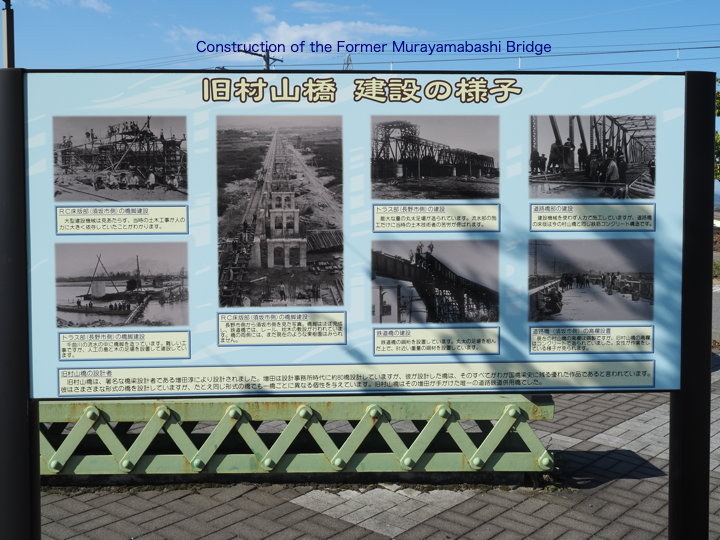
The photo above is too small to make it clear, so I enlarged a part of it.
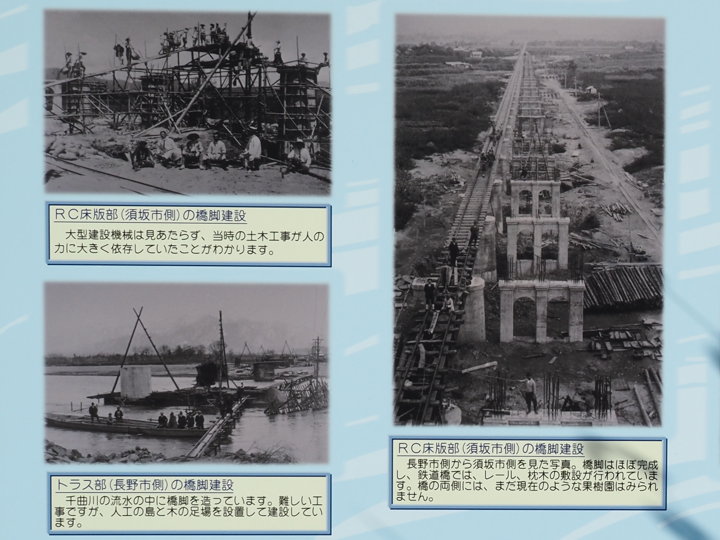
With the opening of the Nagano Electric Railway, the cableway between Nagano and Yoshida, transporters, and stagecoach were also abolished.
Also, around the time construction was completed, Nagano Electric Railway and Kato Railway were to be merged, and an extraordinary shareholders’ meeting was held in September 1926 to inaugurate the new company as Nagano Electric Railway Co.
The first map shows the present-day situation, but the line connecting Suzaka and Yashiro was discontinued in 2012 and the tracks have been removed, so only that line is shown in gray.
When private cars became popular in the 1960s, the bridge became a traffic bottleneck due to its narrow width. Since there were no sidewalks, large vehicles could not pass each other and pedestrians could not pass through, causing chronic traffic congestion.
A plan was therefore made to build a new Murayama-bashi Bridge (project started in 1990), and in 2004, a two-lane bridge was first opened to the south of the old bridge. Then, in 2008, a two-lane bridge was completed next to the old bridge, and the new Murayama Bridge was opened with two lanes each for up and down traffic.
This figure shows a portion of the Memorial Park’s explanatory signage.
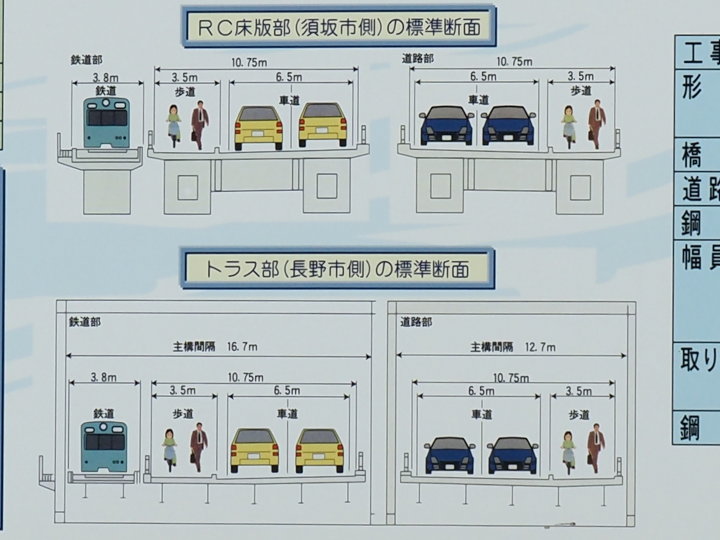
The last photo shows the park’s parking space. a rail was used to car stop.
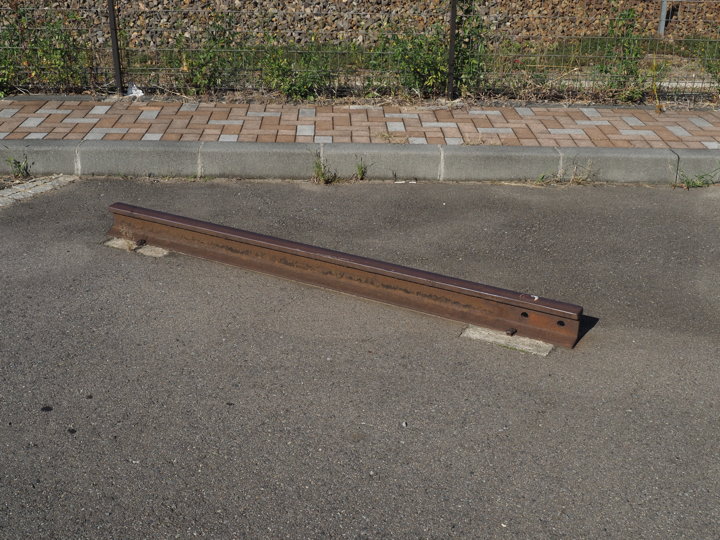
The old Murayama-bashi Bridge was dismantled after the last crossing ceremony was held in November 2009.
As mentioned above, the park was developed as a memorial park in 2011.
[Reference] (written in Japanese)
“Construction Industry" September 1991 issue (Japan Society of Civil Engineers)
“History of Suzaka City" (Suzaka City, 1981)
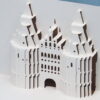
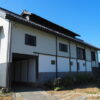
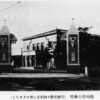
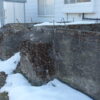
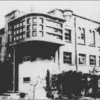

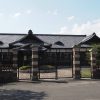
Recent Comments